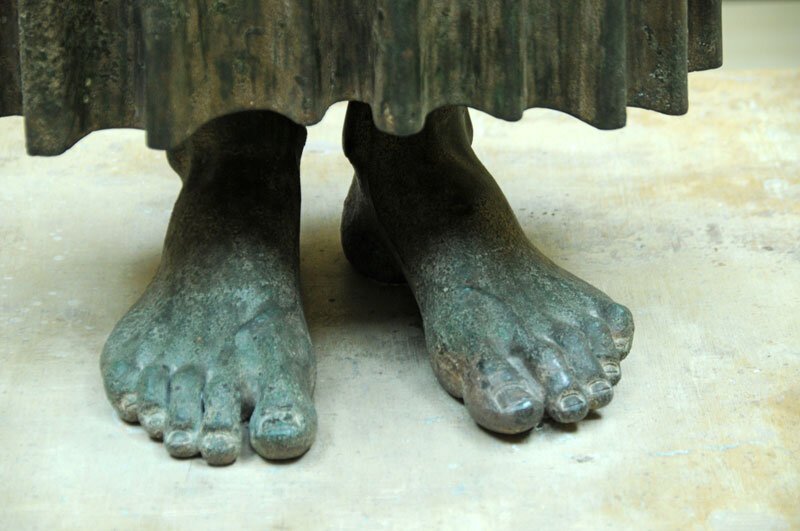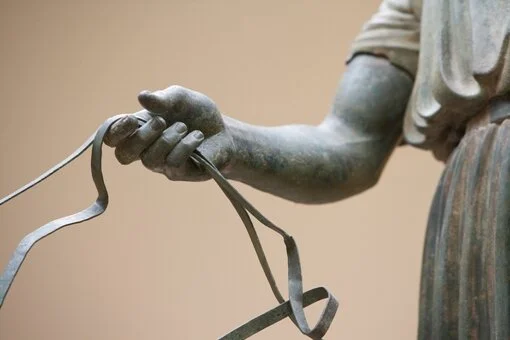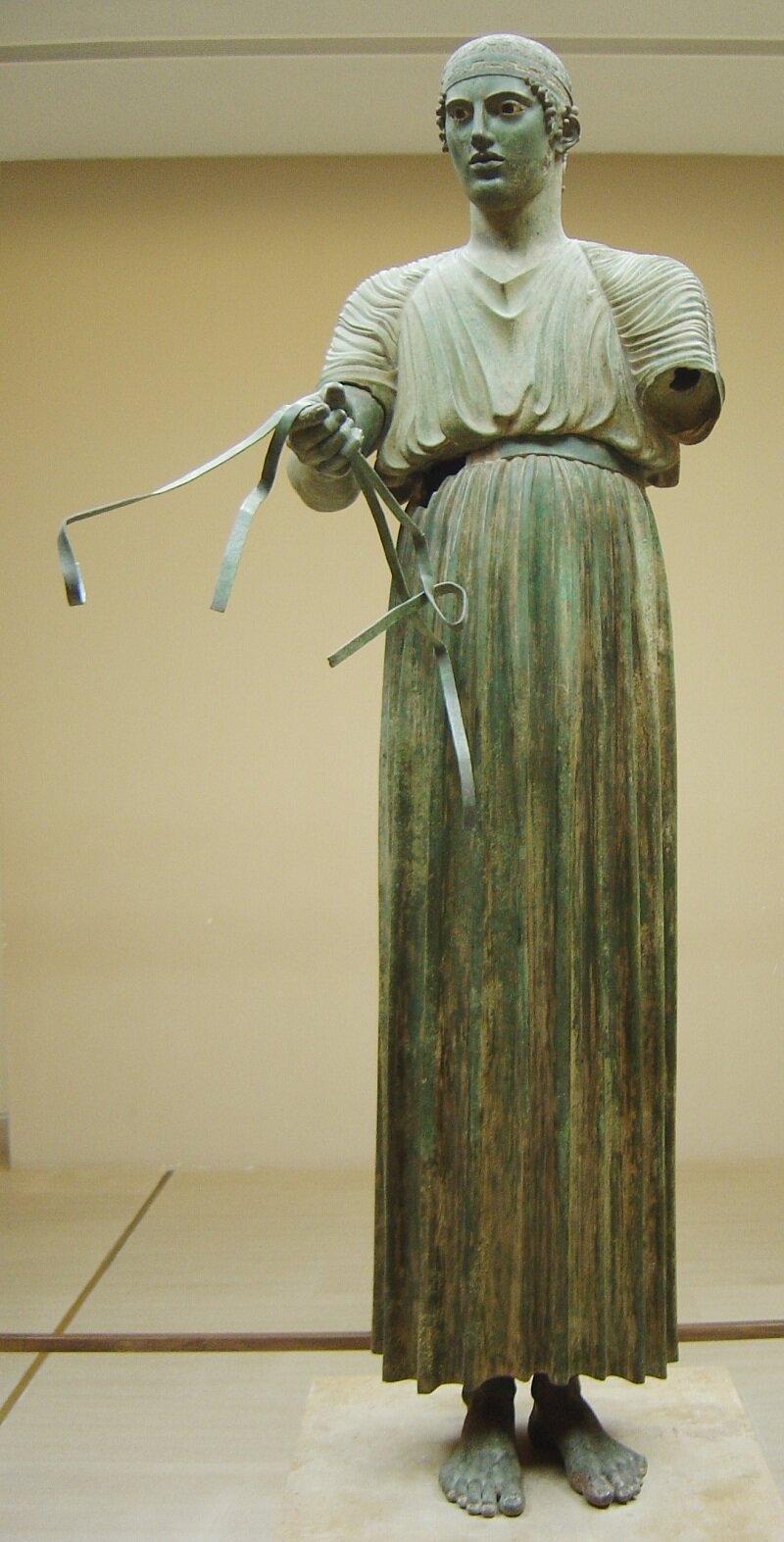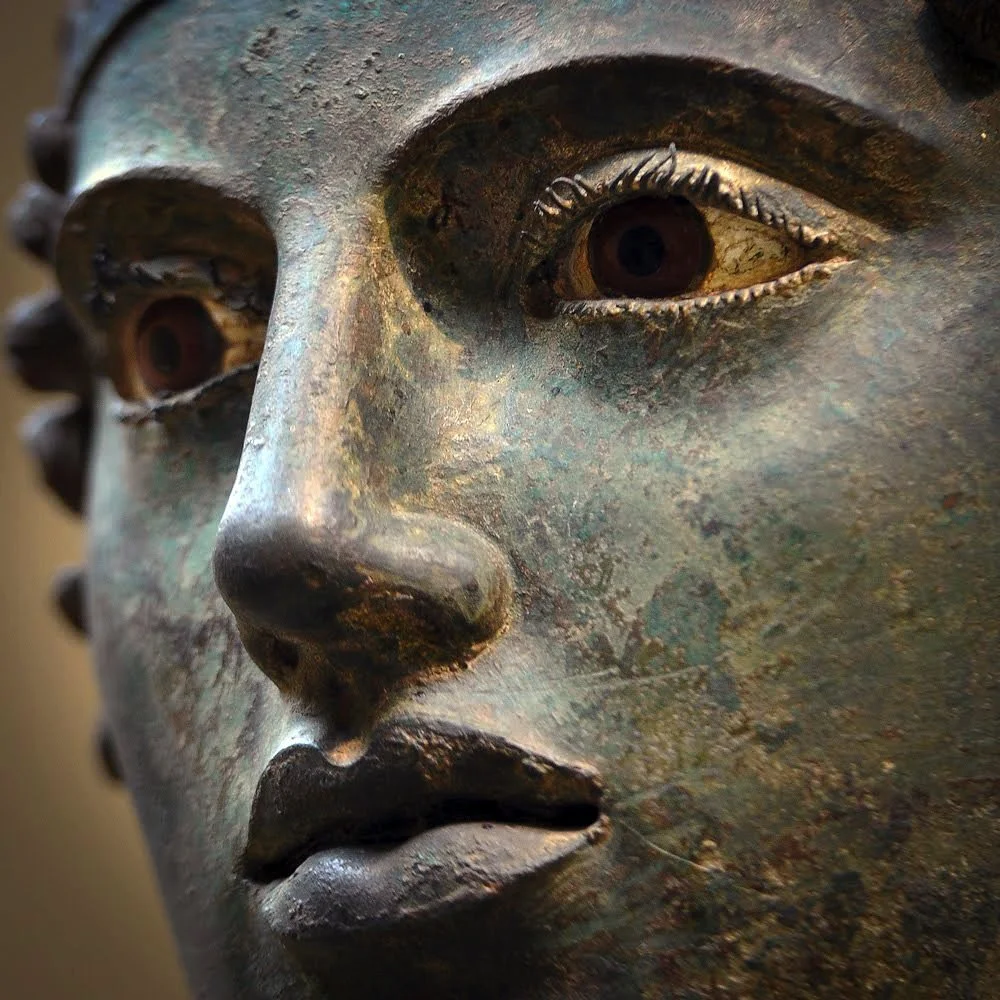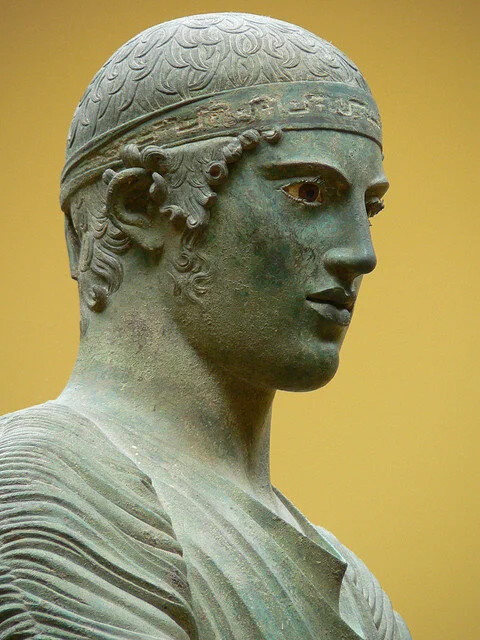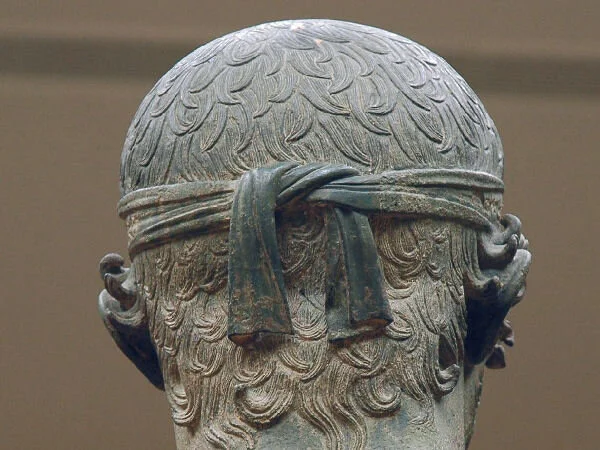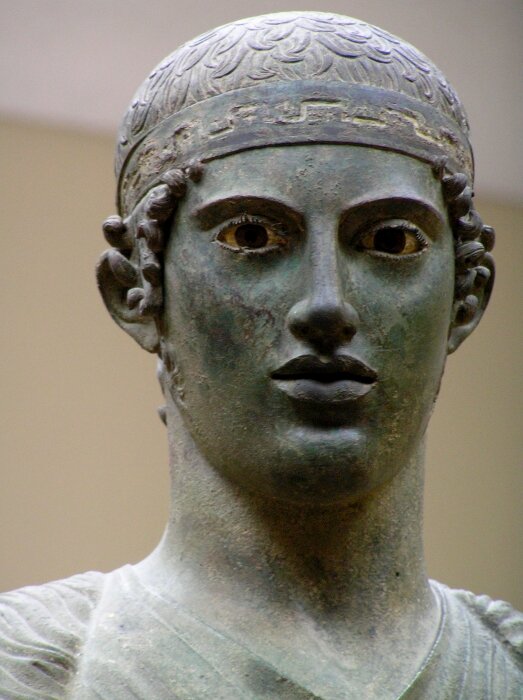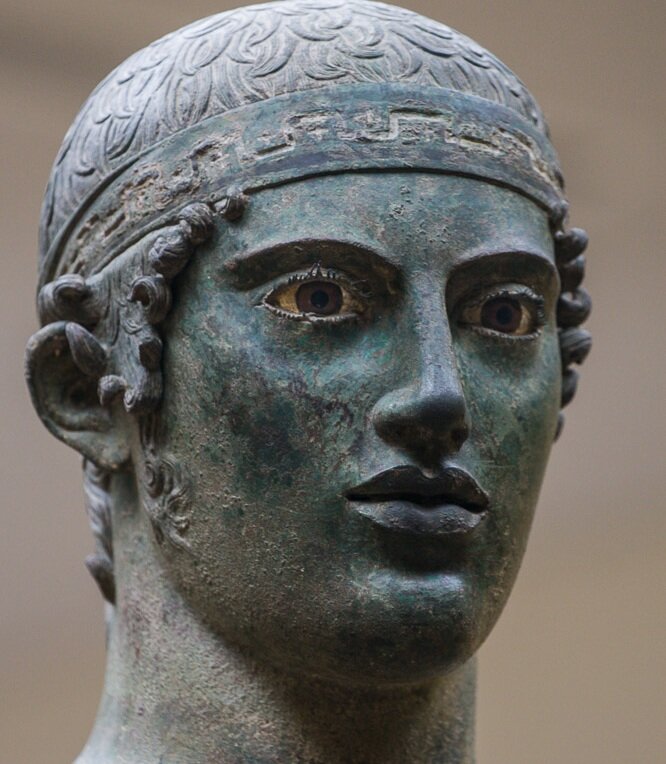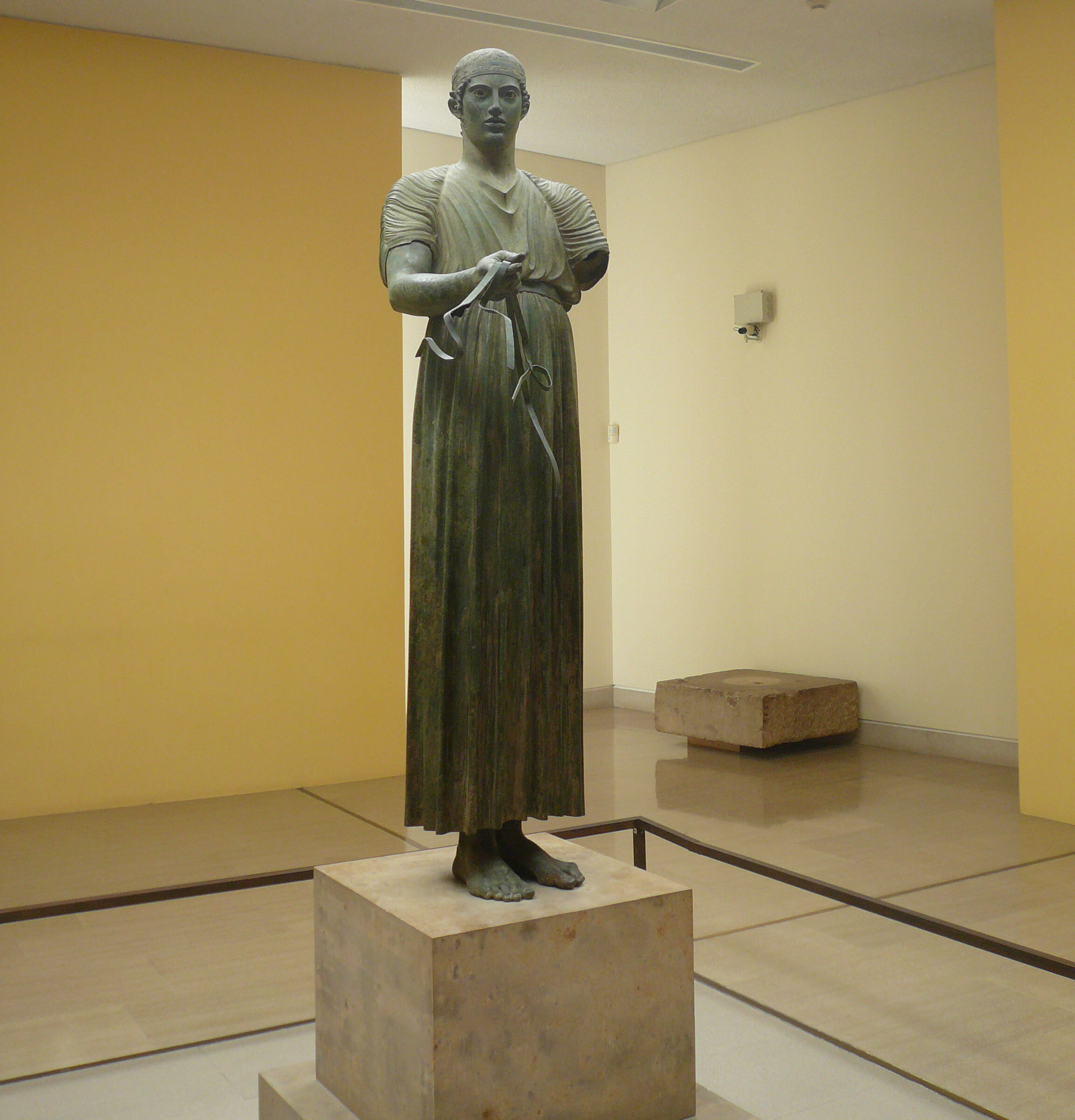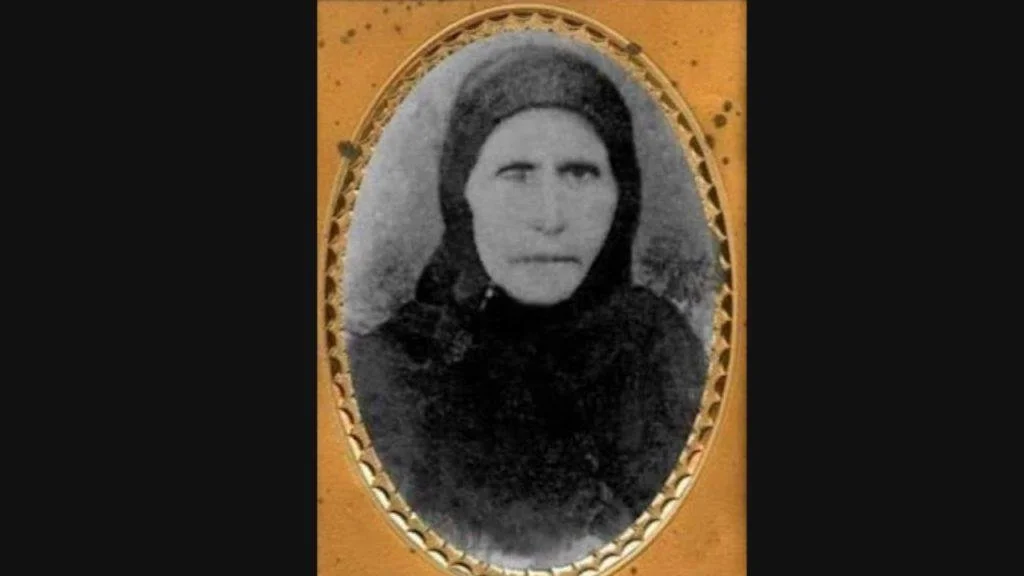"Iniochos' eyes are magnetizing," say some of the scientists who studied the unique statue.
It has its own room in the museum of Delphi, and a quick glance is not enough to see it. You have to look at it closely from all sides and admire the multitude of details on its body and its bronze tunic.
The eyes of Iniochos look alive, and perhaps no other statue gives this unique feeling.
They say that the moment after the victory and the contentment of the winner has been captured on its face, with the expression of the tension but also the self-concentration that the chariot race requires.
It is one of the most important sculptures of ancient Greek art of the early classical period. Its creation comes immediately after the Persian Wars, while its creator is considered to be Pythagoras of Regio or, according to others, Kalamis or Kritias.
The statue is 1.80 m high and belongs to a set of sculptures that Polyzalos, who was a tyrant of Gela, dedicated to Apollo in Sicily, and Pindar praised his victories.
White enamel was used for the eyeballs to make them look exactly like a natural human eye. For the iris, brown semi-precious stone was used, while the pupils of the eyes are black. The eyelashes were made of small copper wires, while its lips were made of thin reddish copper plates.
This meandering band on its head is said to be the official emblem of the winners of Kaviria celebrations.
The bronze statue remained in place for about a century and a half and was destroyed by a major earthquake in 373 BC, which shook the sanctuary of Delphi and destroyed many of its buildings, even the Temple of Apollo.
Pausanias, who visited Delphi in the second half of the 2nd century B.C., described the sanctuary of Apollo and the statues that are there, but did not mention Iniochos statue at all. As his descriptions show, many of the Delphi sanctuaries were already in ruins.


